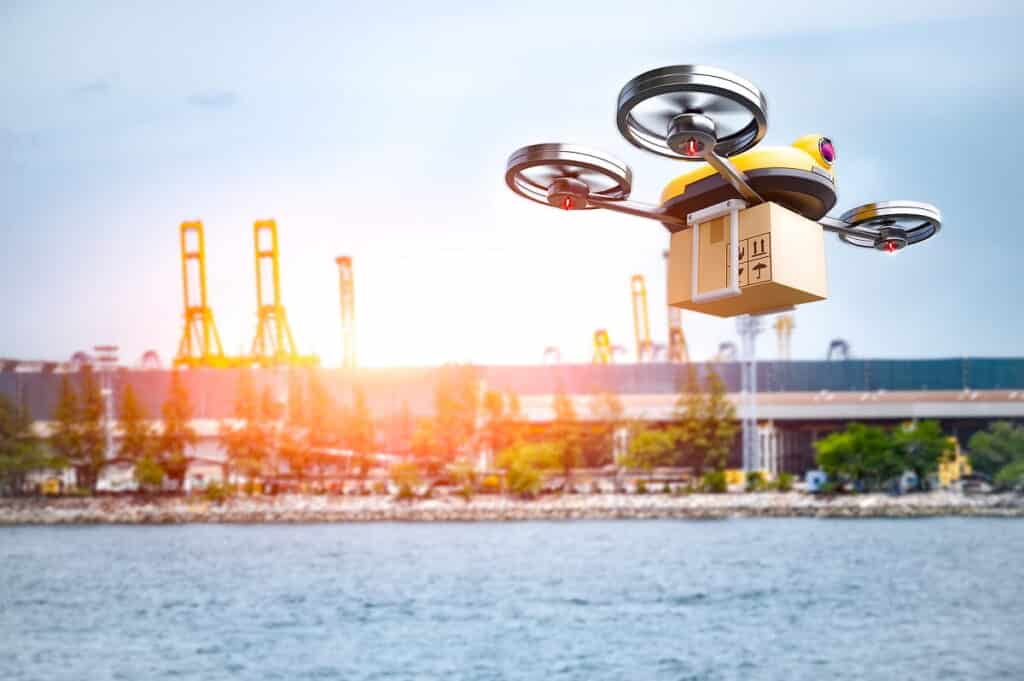Drone Boats and Drone Cargo Shipping by 2025?
Table of contents
Table of contents

While everyone is talking about flying delivery drones and autonomous cars, there exists a massive opportunity for this same type of technology to be applied to cargo shipping. With 90% of all world trade carried out by the international shipping industry, there are around 55,000 merchant ships carrying cargo around the world right now under the control of around 1.5 million seafarers.
The cost of human labor for the shipping industry to operate is very significant. Let’s say each one of those 55,000 ships needs a master mariner (captain essentially) to operate it and the average salary of these captains is $116,000. That’s over $6 billion spent a year for just one of the roles needed to operate a ship. Crew costs account for from anywhere between 35-50% of the total cost to operate a container shipping vessel. Clearly drone shipping boats that can navigate themselves would generate some tremendous cost savings.
So in order to achieve drone cargo shipping, we need some basics in place. Firstly, we need to see what is happening on the ship itself, things like propulsion system information, speed, direction, and the movement of the ship itself. This requires massive upgrades to current ships in the form of digitalizing all the ships functions with sensors which will result in one giant set of “big data“.
Next, we need for these ships to be able to “see”. The ability for computer vision to scan a 360 view of the sea horizon for objects that appear seems easy to do right? But how do you do that when the seas look like this?
And what if the seas looked like that and it was also night time? While the ability to see and identify another vessel visually is important, you wouldn’t need to if you just used radar systems which is how most vessels see at night presently. So now that you can see other boats, you then need a way to communicate all this big data back to a central command center that has human operators orchestrating the entire affair. That ability to communicate anywhere is a bottleneck at the moment because you would need relatively high speed, dependable data transfer available anywhere on the open seas.
So is anyone looking at making drone cargo ships a reality? One company that is working on this vision is Rolls Royce (LON:RR). While most people think of Rolls Royce as a company that produces expensive cars for the ultra wealthy, RR also operates in the areas of aircraft engines and marine power propulsion systems. While Rolls Royce has been working on drone cargo ships since 2013, just last year they began work on a $7.5 million project funded by Finland, a country that is aspiring to become “the world leader in maritime remote control technology”. Below is a visual depiction from Rolls Royce of what a drone cargo ship might look like:
Rolls Royce believes that “Ship Intelligence” will be “the next major transition for the shipping industry as ships are set to become more complex and will require high levels of data analysis to operate on-board systems to manage propulsion, navigation and potentially lead to autonomous vessels“.
Remember the communication bottleneck we talked about earlier? Rolls Royce has solved this by partnering with a company called Inmarsat which plans to provide a new maritime broadband satellite communication system as described below:
“Fleet Xpress will enable the ship-to-shore communications required to support the remote control functionality fundamental to the realisation of the autonomous ship. The high-performance, high-throughput network will open up unlimited possibilities for maritime applications and real-time monitoring and analysis of data, for smarter shipping today and the future.”
So how far are we from having drone cargo shipping become a reality? While the study funded by Finland ends next year, Rolls Royce is claiming that their intelligent ship deck will become a reality by 2025 or nine years from now. The below mockup from RR gives you an idea of what that might look like:
At that point in time, the digitization will be in place that enables the remote control of drone cargo ships. The biggest problems (as with autonomous cars) are the legal hurdles. At the present time, unmanned ships are illegal.
Conclusion
So how can investors play this theme? At the moment, there are not a lot of options. You could buy shares of Rolls Royce (LON:RR) since they are a publicly traded company. With the marine business only accounting for around 15% of their total revenues, the question becomes, just how much will this new technology contribute to their bottom line if ever? Companies that are looking to offer cheap satellite internet access anywhere like Richard Branson’s “OneWeb” are another way to invest in this theme indirectly. While we don’t know when, it’s safe to say that if we can clear the regulatory hurdles required to make driverless cars a reality, then drone cargo shipping can’t be that far behind.
Sign up to our newsletter to get more of our great research delivered straight to your inbox!
Nanalyze Weekly includes useful insights written by our team of underpaid MBAs, research on new disruptive technology stocks flying under the radar, and summaries of our recent research. Always 100% free.
















Such a great information that provide an Idea for shipping in order to have a better shipping, These tips is really useful in order to keep products safe throughout the shipping process till destination.Thanks for helping tips.